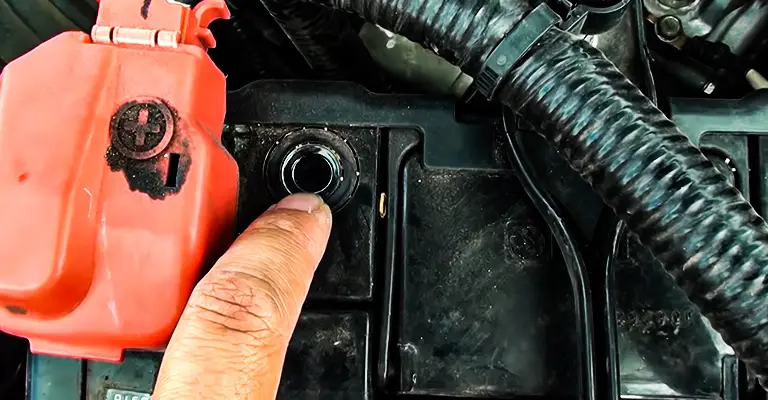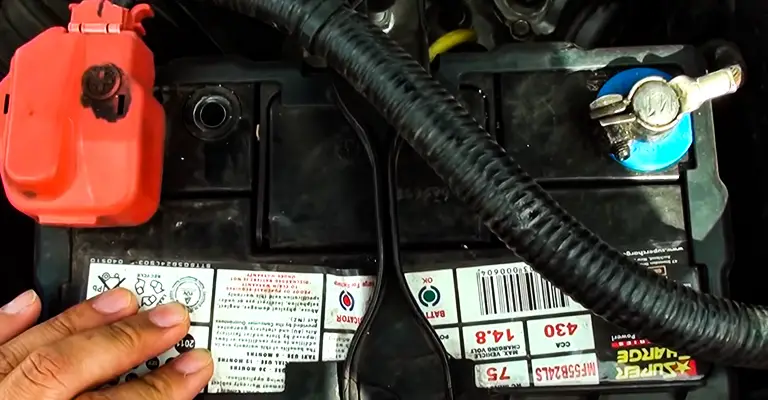You step into your car, and things happen that you never bargained for. The car just won’t start! With the lights and the electrical system still running, it goes without saying that the battery needs a jump start. But this instantaneous solution may seem like a hard nut to crack if you get baffled by the colors on the battery.
You can always call a mechanic and ask for help. However, the entire schedule of your day is likely to get shattered amid all this chaos. Not to mention how much risk will appear if you try those connections without a proper understanding.
So, what do the colors mean on a car battery that freezes you out? Is it really that hard to interpret? Let’s figure that out. Here we’ve tried to explain the answer in as understandable a fashion as possible.

Battery Terminal Colors – Car Battery Indicator Meaning
Tradition insists on red and black to point out the terminals. It’s all about the flow of current.
Black Color – Negative Battery Terminal Color
The black (sometimes blue) color on a car battery usually stands for the negative terminal. You may ask what’s with a negative or positive, and is there a pole or something. Well, the battery does have two poles. They are marked depending on the direction of the current flow and the difference of the voltages.
As current is conducted through the wires and circuits as negatively charged electrons, the terminal from which the electrons emit is negative. This terminal has a minimum voltage count. For safety reasons and to avoid a short circuit, this is the terminal that you should always disconnect first and connect at the end.
Red Color – Positive Battery Terminal Color
Red color is the positive terminal color on car battery.
Though some old batteries may miss out on the blue or black color, you’ll always find the red colored terminal. Beware of the fact that red always represents the positive terminal of a car battery. It’s called the positive, as it points the direction from where the current flows and has the maximum voltage among the two.
How to Hook ‘em Up?
Now that you’re aware of which one’s what let’s talk about the connections. Never connect a red jumper cable to the negative terminal of a battery if that is attached to the positive terminal of another battery and vice versa.
Battery Health Indicator
Though a health indicator is typically attached to only one cell of the battery, it pretty much gives you an overall view. Basically, you’ll come across four colors on the indicator. The indications are as follows.

Green
It means that the battery is fully charged, and the acid level is fair. You can sit back and relax.
Yellow
Yellow stands for a partially charged condition when the acid level is still unharmed. At this stage, you have to charge the battery.
Red
This indicates that the battery has been discharged and requires charging. However, the acid level hasn’t changed yet.
Clear
The acid level is low and requires attention. Either use distilled water or consider making a replacement. It won’t be wise to recharge or jump-start at all.
Wrapping Up
Calling out a mechanic each time your car battery runs out of charge is not a great deal, at least if you ask your financial advisor. Therefore, taking care of such small issues yourself will not only reduce the pressure on your wallet but also make you confident to some extent.
What do the colors mean on a car battery is a question, the answer to which is the initial steps towards a better perception of the automotive world. And we believe that we could help you out even if not being an enthusiast, at least for sorting the color puzzle.
Also read – Top 7 Best Car Battery Charger Reviews in 2020
Leave a Reply